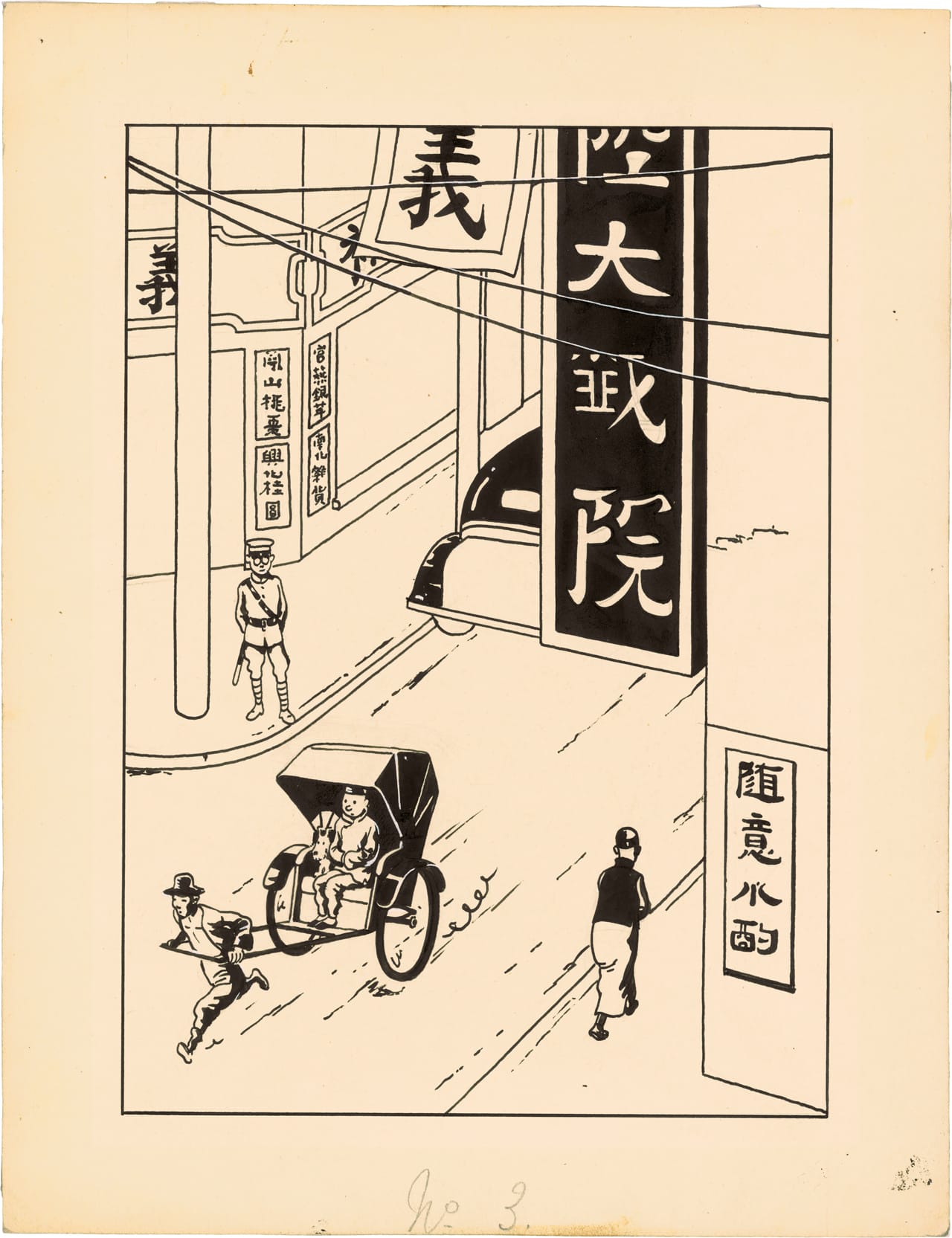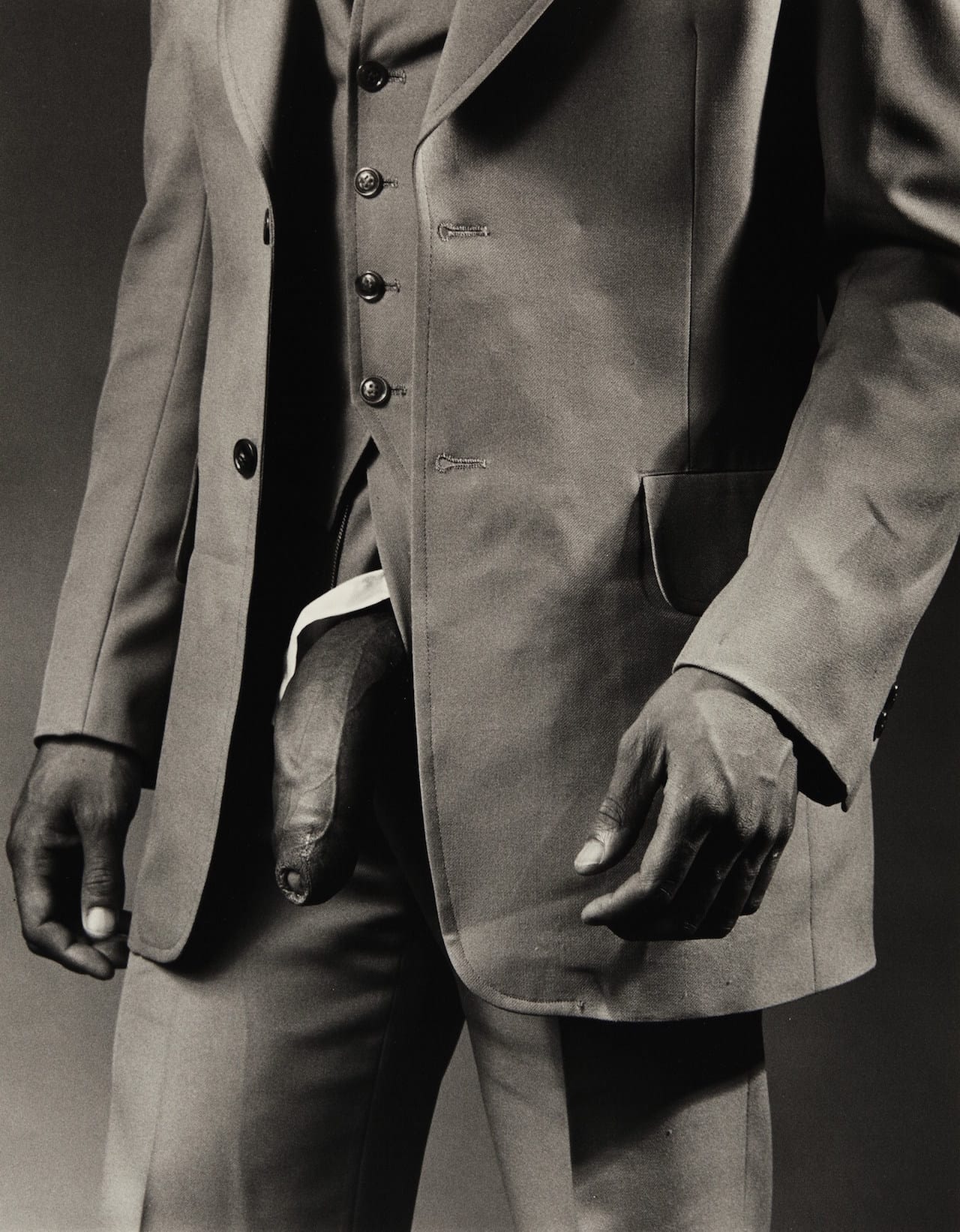Art Movements
This week in art news: a rare Tintin drawing sold for $1.25 million, the UK's first glow-in-the-dark skate park was unveiled, and a rude portrait was found on the back of a Picasso painting.

Art Movements is a weekly collection of news, developments, and stirrings in the art world.
An original drawing from Herge’s Tintin adventure The Blue Lotus sold for $1.25 million at the Artcurial auction house in Hong Kong.
The Gulf Center for Human Rights reported that Syrian cartoonist Akram Raslan was tortured and killed by Syrian government forces in 2013.
The city of Atlanta will repeal an ordinance concerning street photography following complaints that it directly violates the first amendment. Drafted in 1977, the ordinance forbids the taking of photographs outside places of business “unless the person shall have secured and have with such person at the time the written consent of the owner or manager of that place of business.”
The Fundación Via Libre, an Argentinian digital rights organization, launched a campaign against a government bill seeking to retroactively extend copyright protections for photography.
A small (and rather cheeky) painting of Pablo Picasso‘s friend and roommate Pere Mañach was discovered on the reverse of “La Gommeuse” (1901), one of the artist’s Blue Period works.

Spectacle, the non-profit, Williamsburg-based cinema renowned for its programming, is looking to raise $35,000 on Kickstarter following a recent rent increase.
New Democratic Party (NDP) leader Tom Mulcair vowed to provide $60 million in funding to the Canada Council for the Arts, Telefilm Canada, and the National Film Board, should he be elected Canada’s next prime minister.
Jeffrey Deitch plans to open an exhibition dedicated to the homemade films and props of the Angulo Brothers, the subjects of Crystal Moselle’s documentary The Wolfpack (2015).
According to the Deccan Herald, architectural artifacts from the city of Chandigarh — whose master plan was designed by Le Corbusier — are being sold off as “junk” before being transported to western auction houses.
The Museum of Fine Arts, Boston exhibited an antique funerary relief from Palmyra in tribute to Khaled al-Asaad. The archeologist was beheaded by ISIS militants for refusing to reveal the location of protected antiquities.
The Getty Research Institute published the second half of the Knoedler Gallery’s stock database, which dates from 1921–70.
A glow-in-the-dark skate park designed by artist Koo Jeong A opened in Liverpool.

The Hepworth Wakefield founded a new biannual award for UK-based sculptors.
Four paintings by James Hesketh Biggs (aka Colonel Biggs) were discovered in an unmarked envelope by two Adelaide booksellers.
A house in Madison, Wisconsin, was attributed to Frank Lloyd Wright.
A woolly mammoth skeleton was discovered by two farmers in Michigan.
Altered State: Marijuana in California, an exhibition dedicated to the history and culture of the drug, will open at the Oakland Museum of California next year.
Bike racks were installed outside of the Guggenheim Museum — finally!
Transactions

A print of Robert Mapplethorpe‘s “Man in Polyester Suit” (1980) sold for $478,000 (including the buyer’s premium) at Sotheby’s. The work was infamously cited by Senator Jesse Helms as an example of “filthy art.”
An oil sketch by John Constable was sold at Bearnes Hampton and Littlewood auction house for £252,000 (~$386,000). According to auctioneer Dan Goddard, the work was previously owned by Constable’s son, Lionel Bicknell Constable.
David M. Rubenstein donated $25 million to Duke University. Part of the gift will be used to fund a new 71,000-square-foot arts building.
The Phillips Collection and the University of Maryland embarked on a six-year partnership to develop educational curricula and programming, as well as a new gallery and open-storage facility.
Thea Westreich Wagner and Ethan Wagner donated over 850 works to the Whitney Museum of American Art and the Centre Georges Pompidou.
The gold “slave” bikini worn by Carrie Fisher in Return of the Jedi (1983) was sold at auction for $96,000. The Blockade Runner, the first ship to appear on screen in Star Wars (1977) sold at the same auction for $450,000.
New York City residents will be granted free entry to MoMA PS1 for a year starting October 11. Free admission was made possible by a grant from the Anna-Maria and Stephen Keller Foundation.
Transitions

William Kentridge donated a major collection of his films and digital works to the newly rebranded George Eastman Museum, the oldest institution dedicated to photography.
The Newport Street Gallery, a free exhibition space dedicated to works from Damien Hirst’s art collection, opened to the public.
Douglas Druick, the president and director of the Art Institute of Chicago, announced that he will step down once a successor has been appointed.
Elizabeth Alexander was appointed director of the Ford Foundation’s Creativity and Free Expression program.
Peter Brant’s media company — BMP Media Holdings — will consolidate the online versions of Art in America and ARTnews by the end of the year.
David Zwirner now represents the estate of Sigmar Polke.
Andrew Edlin Gallery now represents the estate of Eugene Von Bruenchenhein.
Accolades
Svetlana Alexievich was awarded the 2015 Nobel Prize for Literature.
Eileen Myles was awarded the 2015 Clark Prize for Excellence in Arts Writing.
Jo Applin was awarded the Suzanne and James Mellor Prize for distinguished scholarship on women artists.
Otobong Nkanga was awarded the 2015 Yanghyun Prize.
Obituaries

Chantal Akerman (1950–2015), experimental filmmaker.
Grace Lee Boggs (1915–2015), activist and writer.
Sheri Goldhirsch (1960–2015), artistic director of Young Playwrights Inc.
Olga Hirshhorn (1920–2015), collector and philanthropist. Widow of Joseph Hirshhorn, founder of the Hirshhorn Museum and Sculpture Garden.
Henning Mankell (1948–2015), writer and activist. Best known for the “Wallander” series.
Herschel Silverman (1926–2015), poet and confectioner.
Bill Stanley (1956–2015), director of collections at the Field Museum.





